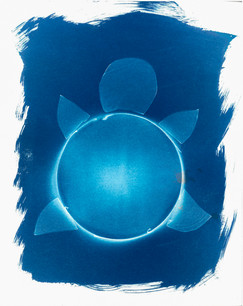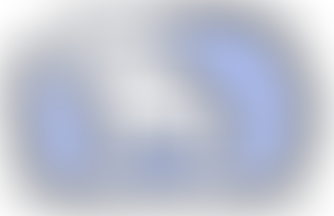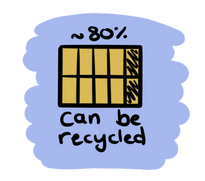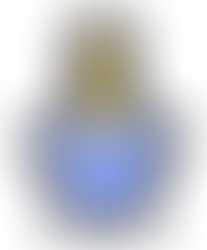The Artwork
- Liz Jenkin

- Aug 12, 2024
- 14 min read
Choosing the Medium
One Blue Eye is an environmentally-conscious business, so one of the key factors I have had to consider when deciding how to utilise my skills in traditional and alternative photography is the eco-friendliness of various processes. If I were to use techniques with hazardous chemicals and a high potential for environmental pollution, it would reflect badly on One Blue Eye. Traditional photography methods use toxic chemicals which are harmful to both people and the environment. Writing for Wex Photo Video, Leo White explains, "Exposure to these chemicals can result in respiratory problems, skin irritation, organ damage, or cancer. Improper disposal of these chemicals can lead to water pollution, contaminating water sources and disrupting aquatic ecosystems" (White, 2024). However, the cyanotype process is a suitable alternative to the silver-based methods as, according to Church (2019), it consumes less energy and water and the chemicals are far less toxic.
Cyanotype is a fitting choice for producing images related to the environment. The chemicals used in cyanotype have a lower toxicity compared to other photographic methods. This method also uses the environmental elements of sunshine and water thus creating a match of medium and content. (Church, 2019)
In addition to its environmental friendliness, the cyanotype process is accessible to everyone. The chemicals are easy to purchase and relatively safe to handle, with pre-coated sheets also available from art shops and Amazon. This accessibility makes it ideal for encouraging audience engagement with the zine, as readers can easily try it themselves. Furthermore, the distinctive blue tone of developed cyanotypes reflects both the name "One Blue Eye" and the plastic-polluted ocean.
In 2012, artist Mandy Barker found a piece of synthetic fabric in a rock pool, initially mistaking it for seaweed (Barker, 2023). Over the following decade, she recovered more than two hundred specimens from Britain's coastline, using them to create cyanotypes mirroring the original algae prints by Anna Atkins in 1843. Some of Barker's work is whimsical and unique, such as "Boxer Shorts (Sunday)" shown in Figure 1 (below), whereas other prints (Figure 2, below) are meant to mimic Atkins' algae images almost exactly. Barker intended for this comparison to engage a wider audience with the problem of fast fashion and its impact on the environment, with the hope of greater awareness leading to "action and change within the fashion industry" (Barker, 2023). I could take a similar approach by creating cyanotypes that reflect the harm done to our environment by plastic pollution.
I would like to incorporate plastic into the cyanotypes in some form, perhaps using plastic to create photograms. I have considered printing photo negatives onto acetate, a cellulose-based bioplastic that is recyclable and biodegradable, and then creating cyanotypes with them, but this would require new plastic rather than recovered and repurposed plastic. One thing I would like to experiment with is printing cyanotypes onto plastic as, while this could not be displayed in the zine except through a photograph, I could potentially create some artwork for display in the One Blue Eye workshop. I know it is possible to print on glass provided it is coated with a suitable substrate first, the most common being gelatine, but I do not know if plastic will work as a substitute for glass. Gelatine, while highly sustainable, is considered by many to be unethical as it is an animal-based product, but there are ethical alternatives that may work. Aline Héau explores and compares the cyanotype process on glass when using gelatine and seaweed-derived agar-agar as substrates (Héau, 2023). While Héau prints onto glass, I may be able to use her methods to print onto sheets of plastic.
Target Audience
There has long been debate over who is responsible for tackling climate change. In an article published in The Guardian, Anders Levermann claimed, "The call for greater individual responsibility actually risks becoming detrimental to the cause as it prevents people from realising the scale of political change that needs to happen" (Levermann, 2019). This perspective highlights the importance of systemic and governmental interventions and suggests that meaningful progress requires large-scale changes that can only be implemented at the governmental level. However, by suggesting that putting the onus on individuals is not simply futile but is actively harmful to the wider efforts to tackle climate change, it could be argued that Levermann's stance shifts all responsibility from individuals and risks the public becoming complacent.
Steve Cohen counters Levermann's argument in his article written for the Columbia Climate School, where he states, "I consider individual responsibility and the thought process and value shift that stimulates individual action as the foundation of the social learning process required for effective collective action" (Cohen, 2021). Cohen's viewpoint suggests that transformative systemic change relies on the cumulative impact of individual action and that we each have a responsibility to challenge our values and behaviours before large-scale changes can be implemented.
One Blue Eye holds a balanced view, aiming to engage and collaborate with both the general public and industries. As Nott explains on Discover Helston's Facebook page, "We want individuals, communities and businesses to understand the value in what is thrown away" (Discover Helston, 2024). This zine is intended to be distributed among the general public to encourage people to recycle from home, recognising that widespread individual actions can collectively drive significant environmental change. While One Blue Eye also works with companies to promote large-scale change, focusing on the general public helps foster a culture of sustainability at the community level. This zine aims to engage individuals and challenge them to reflect on their own recycling practices at home. We want to highlight the issue of plastic pollution, showcase what One Blue Eye is doing to combat it, and inform people on how they can contribute. By correctly recycling, melting and reusing plastic at home, and getting involved in One Blue Eye's workshops, everyone can play a part in creating a more sustainable future.
To engage the audience, we aim to evoke an emotional response by illustrating the impact of plastic pollution on wildlife and the environment, encouraging people to connect with the cause on a personal level and motivating them to take action. According to the University of Southern California, there are two key forms of emotive response to advertisements: an empathetic response and a creative response (University of Southern California, 2023).
An empathetic response is when people empathize with and feel closer to your brand after seeing the advertisement. You achieve empathy if you show kids, babies or dogs in your ads. A creative response occurs when the ad makes people feel your brand is imaginative and ahead of the game. Factors include casting, tone of voice, humor, background music, setting, storyline, or even just the way the ad is directed. (University of Southern California, 2023)
This concept of emotive responses applies not only to advertising products but also to climate change campaigns, which often engage with people's emotions to prompt a call to action. While the zine will act as an advertisement for One Blue Eye and its services, its primary goal is to inform and persuade the audience to take positive action towards sustainable living. By incorporating interactive elements and encouraging people to recycle plastic at home, we can evoke a creative response. To elicit an empathetic response, we need to demonstrate the impact that plastic pollution has on the environment.
In his book Biophilia, Wilson discusses how people have an "innate tendency to focus on life and lifelike processes" (Wilson, 1984). He posits that humans are drawn to nature and wildlife, stating, "To the degree that we come to understand other organisms, we will place a greater value on them, and on ourselves" (Wilson, 1984). Rogers further explains that Wilson's idea of environmental stewardship draws on the "human attachment to nature in the form of emotional connections to landscapes and animals" (Rogers, 2024). This insight led me to conclude that an effective way to evoke an empathetic response regarding plastic pollution is to highlight its detrimental effect on wildlife. This approach has already proven successful in charity campaigns. In the abstract of their article, Swim and Bloodhart state, "Portrayals of polar bears harmed by climate change motivated both environmentalists and non-environmentalists to donate money to environmental activist groups when they took an empathic perspective toward the animals" (Swim and Bloodhart, 2014). This suggests that creating emotional connections with the plight of marine animals could be a powerful tool for inspiring support for tackling the problem of plastic pollution.
Writing for National Geographic, Laura Parker explains that approximately eight million tons of plastic end up in the sea each year, littering marine animals' habitats (Parker, 2024). Animals are often killed by entanglement or starvation because their stomachs are so full of plastic that they cannot take in adequate nutrition (Parker, 2024). The threat of plastic to the environment is inflicted solely by humans and our careless approach to the use and disposal of plastic. In the zine, I would like to include some facts and statistics about marine life. I also feel it appropriate to continue this theme through the subjects of my cyanotypes, so have decided to feature marine animals.
Birsen Kargin has compiled a collection of adverts that creatively highlight the issue of plastic pollution, many of which feature wildlife (Kargin, 2021). Evolve Studio created Figure 3 (above) for Save Earth - EG, which depicts a tearful dolphin encased in a plastic bag (Kargin, 2021). While the teardrop is somewhat dramatic, the advert is impactful, showing how animals suffer in their home environments due to plastic waste. By positioning the shot partially underwater, the artist submerges us in an uncomfortable, unsurvivable, polluted world, forcing us to consider the dolphin's perspective.
Conversely, Figure 4 (above) uses plastic to depict an animal. Protect Worldwide's advertisement for Less Plastic is simple, showing three plastic knives rising out of the ocean like shark fins (Kargin, 2021). The colouring of the plastic and the serrated edge of the knives allude to sharks' teeth. Despite its simplicity, this advert effectively creates a sense of unease in the audience with its numerous references to one of the ocean's greatest predators. However, the knives serve as a stark reminder that the real threat to life is plastic waste.
Continuing this theme, the advert created by EYKHOUT for WWF Germany shown in Figure 5 (above) also uses plastic to depict a marine animal (Kargin, 2021). Initially, the stingray appears peaceful with the sun's rays scattering through the clear water until the realisation hits that this is simply a plastic bag. This striking image serves as a melancholic reminder of our responsibility towards wildlife, and the ghostly plastic remains of the stingray highlight the fragility of life.
It is interesting to note that each of these images references the fact that plastic pollution kills over 100,000 marine creatures a year, a claim originally made by the UK Government (Prime Minister's Office, 2018). Despite their different approaches to illustrating the problem, these adverts all share the same core message: plastic pollution is killing the planet's sea life. The second and third adverts both depict wildlife by using plastic without involving an actual animal, an approach I would like to take with my artwork. Given the common phrase, "You are what you eat", the unsettling concept of plastic entering the food chain has inspired my choice to create images of marine animals using commonly available plastics. By sourcing different types of plastic and cutting or assembling them into easily identifiable sea creatures, I aim to leave plastic-based marine animal impressions as cyanotypes.
Cyanotypes
The main factors I had to consider when choosing plastic to use in these cyanotypes were the material's opacity and availability. Opaque plastics, while producing a stark white silhouette, offer no tonal variation within the image, so transparent and translucent materials were ideal. The objective to inspire artistic use of plastic among others required the use of easily accessible plastics, such as drink bottles and carrier bags. The fact that I did not need to melt the plastic broadened the possibilities to include non-readily recyclable types. After use, I made sure to send the plastic for recycling or appropriate processing.
In a previous body of work, I had success with wet cyanotypes, coating the chemistry with a layer of bubbles, vinegar and turmeric before laying a fern over the top and pressing it together with glass. This was then exposed for several hours, resulting in a beautifully textured image, as shown in Figure 6 (above). Inspired by this technique, I attempted a similar approach with my marine animal cyanotypes. To maintain the images' simplicity for printing with blue ink on the Riso, I placed bubbles on top of the chemistry, omitting the vinegar and turmeric, then pressed it together with glass before laying the plastic jellyfish over the top (Figure 7, below). Despite an hour's exposure, the print completely washed out, as seen in Figure 8. I then tried a dry method, compressing the bubbles between two sheets of glass and adding the jellyfish as before (Figure 9). However, this proved ineffective as the plastic required a longer exposure time than the bubbles. To achieve detail in one aspect would leave no detail in the other. Ultimately, I returned to a standard cyanotype process, producing one of my favourite images, depicted in Figure 10. This successful jellyfish was created using ribbons of plastic cut from bags of varying opacity and a segment from the curved base of a 500ml drink bottle.
After the jellyfish, I attempted to capture the impression of a well-beloved marine animal - a sea turtle. Initially, I tried to do this by using the bottom of a large drink bottle as its shell and bottle tops as its limbs, head, and tail, as shown in Figure 11, below. These additions, however, were too large, rendering the turtle unrecognisable (Figure 12), so I replaced the bottle tops with shapes cut from the same bottle. I hoped that the shapes on the bottle's base would enhance the impression of a turtle shell, but the diffraction of light from multiple angles diminished the detail. There is only a faint indication of the intended shell visible in the areas with the thickest plastic (Figure 14). It was a shame that the textures didn't show through as I had hoped it would be a strong yet simple image with easily-identifiable pieces of plastic.
My client particularly appreciated the 'ship in a bottle' image, which, while not depicting a marine animal, resonated due to its beach-related symbolism. The metaphor of messages in bottles cast into the sea underscores the enduring nature of oceanic waste. I could not feasibly create a legible message within the bottle, so I opted to make a small ship from cut-up plastic bags instead. The bottle was created simply by cutting a 500ml water bottle in half lengthways and laying it flat-side down (Figure 15, below). This arrangement created a recognisable silhouette of a bottle against a backdrop of the sea, crafted from strips of plastic bags. The top strip was taken from a Tesco bag, whose more opaque stripes created the impression of waves, enhancing the visual narrative.
I am particularly pleased with the fish images, primarily due to the subtle inclusion of the Tesco logo on the seaweed, as seen below in Figures 17 and 19. While it is discreet enough not to overpower the image, it is still identifiable, serving as a reminder of the shared accountability both corporations and consumers have regarding plastic bags. The fish were crafted from opaque bottle tops and thicker segments of shopping bag handles, contrasting well with the translucent seaweed, although I noted the bright white spaces felt somewhat empty.
To address these empty areas and enhance visual interest, I introduced a digital layer, adding simple gold details. In the portrait version featuring fish and seaweed (Figures 29 and 30), I embellished the fish to give them more personality, while in the landscape format (Figures 27 and 28), I enriched the white spaces with additional details like seaweed, rocks, and other marine creatures. For the jellyfish (Figures 21 and 22), I accentuated the bottle impression to define the bell and add depth, and I sketched delicate tendrils to break up the white spaces in the tentacles. For the sea turtle (Figures 23 and 24), I drew along the subtle lines of the bottle to better depict the shell. Lastly, to highlight the wave effect created by the Tesco bag beneath the ship in a bottle (Figures 25 and 26), I traced wave patterns across the depicted sea.
For the front cover of the zine, I aimed to create a cyanotype version of the One Blue Eye logo. I used both positive and negative acetate prints over the cyanotype sheets, exposing them to the midday sun for five minutes (Figures 31 and 32). Additionally, I experimented with creating a wet cyanotype of the logo using bubbles and vinegar, leaving it in the sun for half an hour due to the slower reaction time of the wet chemistry. The difference between the one-minute exposure of the dry and wet cyanotypes is evident in Figures 31 and 33. Here, the wet cyanotype is still in the early stage of exposure, appearing bright green in some areas, while Figure 34 depicts the wet cyanotype after the full half-hour exposure.
After washing, drying, and scanning the prints, I presented the client with several design options: the classic logo (Figure 35), the inverted logo with a rough border (Figure 36), and the textured logo (Figure 37). He appreciated all the designs but showed a preference for the textured logo created using the wet cyanotype process. This version also resonated with me as it showcases a lot of detail while maintaining legibility; the texture strikingly resembles water, echoing the oceanic theme. It is not perfect - there are soft areas where the contact between the negative and the paper was poor, and some blue tones bled into areas meant to remain white. However, these imperfections add to the handcrafted, artisanal feel of the zine and complement the other cyanotypes I have created.
Preparing for Riso-Printing
Here, I have illustrated the process of separating different colours into layers in preparation for Riso-printing. The base layer is blue, followed by gold, and finally black on top. Although the cyanotypes themselves do not incorporate black layers (above), the other drawings and the majority of the text in the zine do (below). To prevent ink overlap and ensure uniform colour, I have erased the areas on the lower layers that are covered by the upper layers. This can be seen in the images above where I erased the blue layer underneath the gold seahorse.
The illustrations used throughout the zine maintain this layered colour scheme to ensure consistency and simplify the printing process. Including hand-drawn elements introduces a personal touch, which resonates with the community-oriented ethos of One Blue Eye.
The first set of illustrations above visually presents facts about the proportion of plastic that is recycled, while the second series depicts the various sources One Blue Eye collects plastic waste from. These images not only complement the textual content but also break up the information into smaller parts, making it more digestible and less dense. A few whimsical doodles are interspersed to enhance engagement and interest without overshadowing the zine’s key message.
When the zine is completed, I will give the client four separate digital versions: one combining all colour layers, and three others each containing the blue, gold, and black elements separately. This approach ensures that the zine is optimised for both Riso-printing and conventional printing methods. It also offers the client a range of options to suit different printing requirements and digital display preferences according to his specific needs and budget.
References
Barker, M. (2023) Comparisons, Atkins - Barker. Available at: https://www.atkins-barker.com/comparisons (Accessed: 25 July 2024).
Church, R. (2019) Cyanotype Impressions of the Atlantic Ocean in Maine, The Maine Journal of Conservation and Sustainability. Available at: https://umaine.edu/spire/2019/09/18/cyanotypes/ (Accessed: 25 July 2024).
Cohen, S. (2021) The Role of Individual Responsibility in the Transition to Environmental Sustainability, State of the Planet. Available at: https://news.climate.columbia.edu/2021/05/10/the-role-of-individual-responsibility-in-the-transition-to-environmental-sustainability/ (Accessed: 22 July 2024).
Discover Helston (2024) Discover Helston, Facebook. Available at: https://www.facebook.com/story.php/?story_fbid=904359988364024&id=100063700924177 (Accessed: 22 July 2024).
Héau, A. (2023) Cyanotype on Glass : History, Processes, Variations, Aline Héau - Cyanotypes. Available at: https://cyanotyp.es/technique/cyanotype-on-glass-history-processes-variations/ (Accessed: 25 July 2024).
Kargin, B. (2021) 7 Creative Water Pollution Ads, Marketing Birds. Available at: https://themarketingbirds.com/7-creative-water-pollution-ads/ (Accessed: 23 July 2024).
Levermann, A. (2019) Individuals Can’t Solve the Climate Crisis. Governments Need to Step Up, The Guardian. Available at: https://www.theguardian.com/commentisfree/2019/jul/10/individuals-climate-crisis-government-planet-priority (Accessed: 22 July 2024).
Parker, L. (2024) Plastic Pollution Facts and Information, National Geographic. Available at: https://www.nationalgeographic.com/environment/article/plastic-pollution (Accessed: 24 June 2024).
Prime Minister’s Office (2018) Prime Minister Launches 25 Year Environment Plan, GOV.UK. Available at: https://www.gov.uk/government/news/prime-minister-launches-25-year-environment-plan (Accessed: 10 July 2024).
Rogers, K. (2024) Biophilia Hypothesis, Encyclopædia Britannica. Available at: https://www.britannica.com/science/biophilia-hypothesis (Accessed: 23 July 2024).
Swim, J. K. and Bloodhart, B. (2014) ‘Portraying the Perils to Polar Bears: The Role of Empathic and Objective Perspective-taking Toward Animals in Climate Change Communication’, Environmental Communication, 9(4), pp. 446–468. doi: 10.1080/17524032.2014.987304.
University of Southern California (2023) Thinking vs Feeling: The Psychology of Advertising, USC MAPP Online. Available at: https://appliedpsychologydegree.usc.edu/blog/thinking-vs-feeling-the-psychology-of-advertising (Accessed: 21 July 2024).
White, L. (2024) Sustainable Darkroom Practices: An Interview with Hannah Fletcher, Wex Photo Video. Available at: https://www.wexphotovideo.com/blog/news-articles/nature-landscapes/sustainable-darkroom-practices-an-interview-with-hannah-fletcher/ (Accessed: 25 July 2024).
Wilson, E.O. (1984) Biophilia, Perlego. Harvard University Press. Available at: https://ereader.perlego.com/1/book/1148545/4 (Accessed: 23 July 2024).















































































































Comments